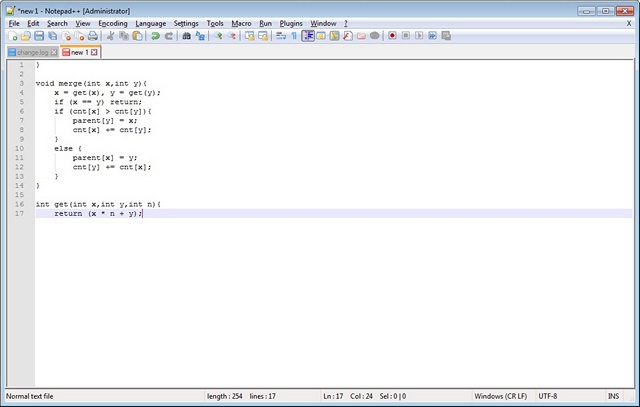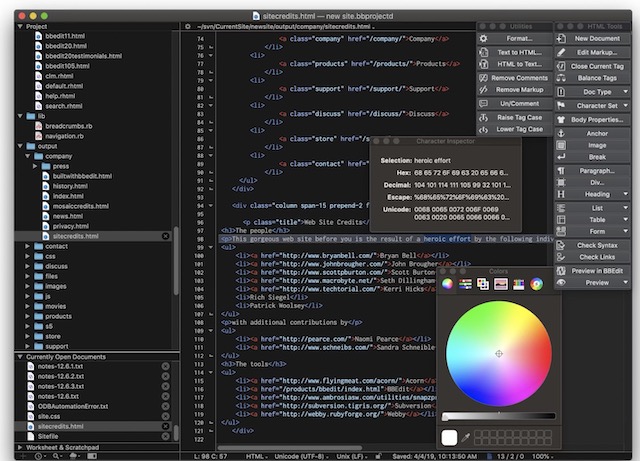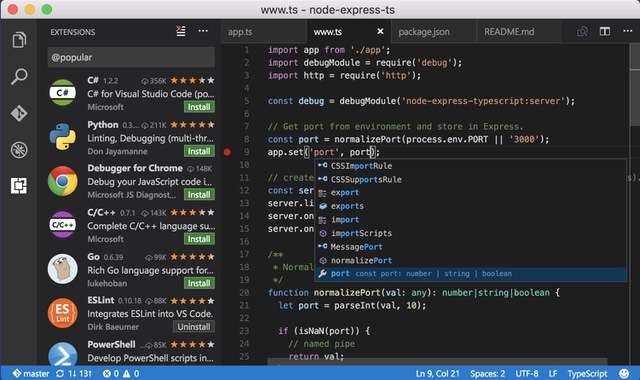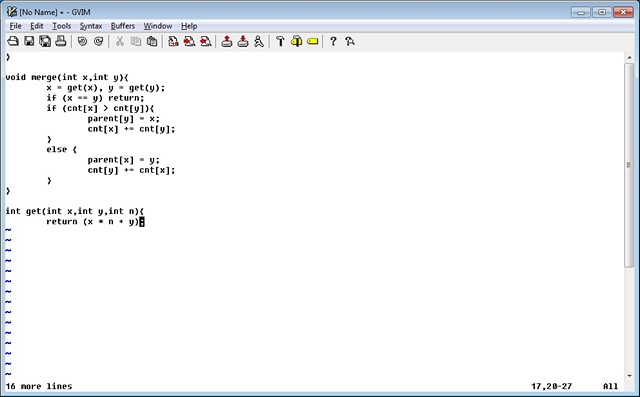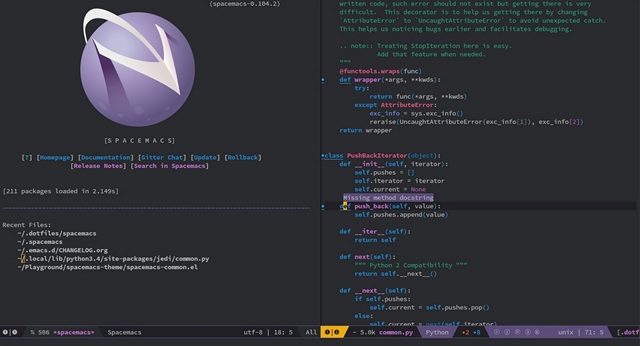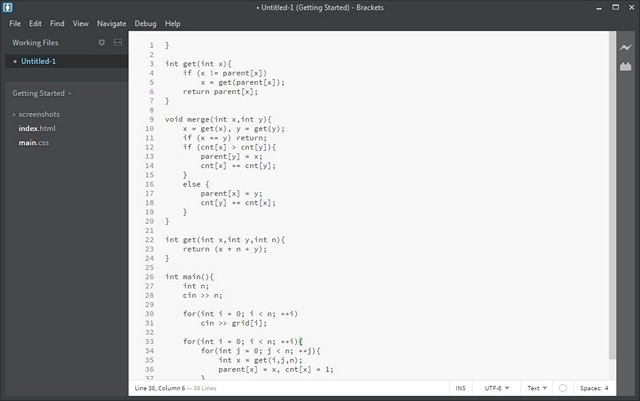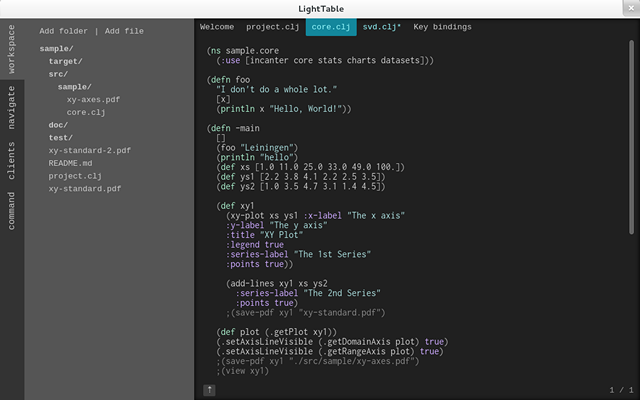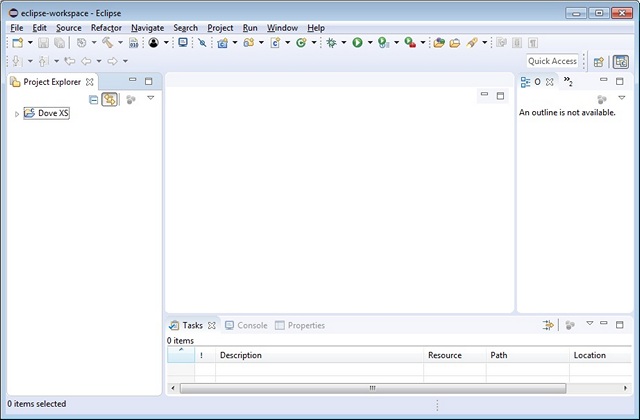Best Sublime Text Alternatives in 2020
1. Notepad++
Notepad++ is a free source code editor which supports several programming languages under the MS Windows environment. It uses the Scintilla editor component and is written in C++ with “Win32 API calls using only STL to increase performance and reduce program size”. While the software has support for macros and plugins, it isn’t as feature-rich as many of the other editors on this list. However, its simplicity and familiar UI means that it is an easy recommendation for someone just getting into coding. While advanced programmers will probably look for something a bit beefier, Notepad++ does come with most of the features you’d expect from a basic code editor, including syntax highlighting, syntax folding, search/replace, split-screen editing, synchronized scrolling and multi-document tab interface.
Like Sublime Text, it also comes with limited auto-completion for programming, scripting and markup languages, but unlike Sublime Text, it doesn’t support intelligent code completion or syntax checking. As an open source project that’s licensed under the GNU GPL, Notepad++ was originally hosted on SourceForge from 2003 to 2010. The hosting shifted to TuxFamily in France when, in January 2010, the U.S. federal government included software services under its ITAR (International Traffic in Arms Regulations) purview, thereby forcing SourceForge to restrict access to users from Cuba, Iran, North Korea, Sudan and Syria. Since 2015 is currently hosted on Github, and is generally considered to be one of the best Sublime Text alternatives one can use. That said, it’s only available on Windows which is a bummer. Mac users can check out our Notepad++ alternative for macOS article to find similar software. Platform: Windows Download: (Free)
2. Atom
Atom is free, open source and highly customizable. Build around a minimal core, the software comes with 50 open source packages, and hosted on GitHub like many of its open source counterparts. Atom is based on the open source Electron framework that was originally created by Cheng Zhao, but is now developed by GitHub. It’s written in pure HTML/CSS on top of Chromium. The project started only in 2014, but already has over 7,000 different packages, just about all of which are also hosted on Github. You could use something like Autocomplete+ to get some additional autocomplete features or use Minimap to visually skip to certain parts of a file.
Unlike Sublime Text, Atom supports the drag/drop action for files and folders in tree view, which is a definite plus for regular users. If you’re the type who works on multiple files at the same time, you’d also appreciate Atom’s split-pane editing feature. Atom also comes with a number of default plugins that make it compatible with a whole bunch of programming languages, including C, C++, C#, HTML, Java, Python, SQL and more. The inherent benefit of being one of Github’s own projects is that it has great git integration. Overall, it’s a great piece of software if flexibility and customization come at the top on your list of priorities. Platforms: Windows, Linux, macOS Download: (Free)
3. BBEdit 13
Arguably the best professional HTML and text editor for macOS, BBEdit is another great Sublime Text alternative you can check out. BBEdit provides users an intelligent interface that gives users easy access to all of its amazing features, including grep pattern matching, search and replace across multiple files, project definition tools, function navigation and syntax coloring for numerous source code languages, code folding, and a lot more. One of the best features packed within BBEdit is its ability to compare two documents and find differences in them.
BBEdit supports syntax highlighting for a number of popular computer languages, including ANSI C, C++, CSS, Fortran 95, HTML, Java, JavaScript, JSP, Lasso, Object Pascal, Objective-C, Perl, PHP, Python, Ruby, SQL, XML, YAML, among others, making it a brilliant alternative to Sublime Text. It also offers users a ton of customization features, however, accessing these features might seem like a problem to new users as they’re buried deep within the settings. Once you know where all the features are located though, using BBEdit is a breeze. Needless to say, BBEdit is one of the best Sublime Text alternatives that you can get on Mac right now. Platforms: macOS Download: ($49.99, 30-day free evaluation period)
4. Visual Studio Code
Visual Studio Code is a FOSS source code editor and debugger that’s developed by Microsoft and is hosted on Github. The software is available not just on Windows, but also on macOS and Linux. It includes support for embedded Git control, syntax highlighting, intelligent code completion, snippets and code refactoring. It is also customizable, which allows users to change the editor’s theme, keyboard shortcuts and other preferences. Like Atom, VS Code is based on the Electron framework using Node and HTML/CSS, but instead of using Atom, it employs ‘Monaco’ – the same editor component used in Visual Studio Team Services.
Visual Studio Code supports a number of programming languages, including, but not limited to C, C#, C++, HTML, JSON, Objective-C, Objective-C++, PHP and more. Like Sublime Text, VS Code also supports a wide array of plugins, which enhance the functionality of the editor and add language support. The extension management is built-in, and a few important ones are part of the default download package. A notable feature is the ability to create extensions that analyze code, such as linters and tools for static analysis. The software was first released in 2015, and is currently on version 1.15.1, which was released just last month. Platforms: Windows, Linux, macOS Download: (Free)
5. Vim
Vim is a free and open source cross-platform command line text editor that’s available on a wide variety of platforms ranging from Windows, Linux, macOS and Unix to Android, iOS, Amigaos and more. The software is a clone of the open source Vi text editor program for Unix, and its name is a contraction of ‘Vi Improved’ as a reference to the original program written by renowned computer scientist and Sun Microsystems co-founder Bill Joy in 1976. The program has an army of power users supporting it and, has around 15,000 packages that bring tree explorers, syntax highlighters, theming, Git integration, etc. You can visit VimAwesome for some of the best plugins the community has to offer.
Unlike Sublime Text, Vim doesn’t have a GUI that would allow you to use a mouse to navigate conveniently, so the opening, closing, editing and saving actions are all done via keyboard shortcuts like you’d do on a terminal. While not having a GUI means it has more of a niche appeal, it is still one of the most flexible and powerful source code editors you can use today. There are also a lot of pre-configured Vim configuration files that you can find on the net by just searching for .vimrc. If you want to take the time to learn about this incredibly powerful tool in more detail, you can go over to Vim-Adventures where you can play an online game to learn about all the basic commands in a fun way. Platforms: Windows, Linux, macOS Download: (Free)
6. Spacemacs
GNU Emacs are generally considered to be the world’s most extensible and customizable source code editors, and Spacemacs happens top be one of the most popular Emacs starter kits. As you’d already know by now, it is a free and open source text editor based on GNU Emacs and, features both graphical and command-line UIs that are executable under X display manager as well as within the Unix terminal. The program brings the full power of the Emacs plugin ecosystem and the vi keybindings (via EViL), making it a powerful and versatile Sublime Text alternative. The software aids the productiveness of Vi users while allowing regular Emacs users to still use the software effectively.
Spacemacs uses the space bar as a default leader key, which is where the program gets its name from. The syntax highlighting feature on Spacemacs is enabled by default for all major programming languages, and it is configurable manually through configuration files as well as via internal commands. For all its positives, the program can be quite a bit glitchy at times. From annoying keybinding conflicts to non-functional LaTex support and substandard tab/workspace plugins, Spacemacs can be a bit much for some, but if you like your yak-shaving tasks, this could very well be the perfect project for you. Platforms: Windows, Linux, Unix, macOS Download: (Free)
7. Brackets
Brackets is yet another example that free and open source software can also sometimes come from the biggest names in commercial software. Adobe, better known for expensive software like Photoshop and Premier Pro, is the company behind this program which is licensed under the MIT License and is currently hosted on GitHub (repository). Brackets was specifically written for web developers in HTML, CSS and JavaScript using CodeMirror in a Node.js container. It is available on a number of platforms, including Windows, macOS and Linux.
Some of the notable features of Brackets include Quick Edit, Live Preview, Split View and Theseus integration. In terms of language support, the software supports C, C++, Java, JavaScript, HTML, Python, Perl and Ruby, among others. Like Sublime Text, Brackets, too, supports extensions that can enhance the functionality of the software greatly, thanks to a built-in extension manager. One thing that needs to be mentioned here is that Brackets sends user data over to Adobe servers by default, but you can always turn it off if you want to, by going over to Help > Health Report. Platforms: Windows, Linux, macOS Download: (Free)
8. Light Table
On its official website, Light Table describes itself as the “next-generation code editor” that aims to provide a flexible interface, real-time evaluation, instant execution, live visualization, debugging and documentation. Like many of the other software on the list and unlike Sublime Text, Light Table is a free and open source program that’s released under the MIT License. It’s is written in ClojureScript with a Node-Webkit wrapper, and though it started off as an environment for Clojure and ClojureScript, it has since added support for other programming languages, such as Python, JavaScript, HTML and CSS.
While Light Table has limited language support compared to Sublime Text, it does come with a a few nice touches, such as Auto-complete everywhere, split views and a command palette. It also comes with a good selection of themes, but one of the major negatives of the program is that you can’t view image files in it in spite of the fact that it’s based on a browser platform. Overall, Light Table is an interesting, relatively-new project that’s lightweight and fast, but users do have a steep learning curve, which may be a problem for many given how its not as feature-rich as some of the other software above it on this list. Platforms: Windows, Linux, macOS Download: (Free)
9. UltraEdit
UltraEdit is one of the most powerful and versatile text editors that you can get to replace Sublime Text. First of all, like Sublime Text, UltraEdit is available on three major platforms including macOS, Windows, and Linux. I love that the app is fully themeable. You can choose built-in themes, themes created by the community, or create your own themes. When it comes to features, UltraEdit is second to none. It brings intuitive multi-caret editing along with multi-selection capabilities. It features a robust search engine that lets you search your code instantly.
Talking about code, it supports a ton of different languages including C, Objective C, Javascript, XML, PHP, Perl, Python, and more. It supports retina and UHD displays, that means your code always looks crisp. Finally, it can easily handle large code files, making it one of the text editors to handle large projects. That being said, if Sublime Text’s pricing is what is making your search for its alternatives, then it’s not for you as it charges a subscription fee. But if you are not happy with Sublime Text’s features and want something more powerful, you should check it out. Platform: Windows, macOS, and Linux Download: (Free trial, $79.95/year)
10. TextMate 2.0
If you are a macOS user who is looking for a cheaper Sublime Text alternative, look no further than TextMate. TextMate is a native macOS application that is rich in features. Unlike the other cross-platform options featured in this list, TextMate looks and behaves like a native macOS application. Talking about its features, it brings all the bells and whistles that you expect from a pro text editor. You get support for multiple carrots, robust search, version control, support for snippets, and macros, and more. This is one of the best text editors on the market right now.
Platform: macOS Download: (Free trial, $52.88)
Bonus. Eclipse
Eclipse is a free and open source (FOSS) source-code editor like most of the other entries on our list, but it is much more than just a source code editor. It is actually a full-fledged cross-platform IDE (Integrated Development Environment) that’s available on Windows, Linux, macOS and Solaris. The program itself is written mostly in Java and, started life as a Java environment for the most part, but thanks to a large number of plugins and extensions, it now supports a wide array of programming languages, including, but not limited to, C, C++, C#, COBOL, Fortran, JavaScript, PHP, Java and more. While Python isn’t supported out-of-the-box, the PyDev plugin gets the job done.
As for the features of this highly-popular IDE, it comes with a whole bunch of integrated debugging tools alongside Git/CVS support. The standard edition of Eclipse also comes with Java and Plugin Development Tooling. Developers can also choose from other packages that include tools for charting, modeling, reporting, testing and building GUIs. In case you’re interested in checking out the treasure trove of plugins available for the platform, you should go over to the Eclipse Marketplace Client that allows users to install software directly from within an Eclipse installation. Platforms: Windows, Linux, macOS, Solaris Download: (Free)
The Best Sublime Text Alternatives You Should Try
While all of the source code editors and IDEs mentioned above are great Sublime Text alternatives for Windows, macOS and Linux because of the high levels of customization they offer, none of them are perfect if we’re being completely honest. They each have their own pros and cons, so ideally, you should give each one a try to see what works for you and what doesn’t. In case you’re already using or have used any of the programs mentioned above or think we’ve missed out on something that deserves to be on this list, do let us know in comment section below. We’d love to hear your thoughts on the subject.
